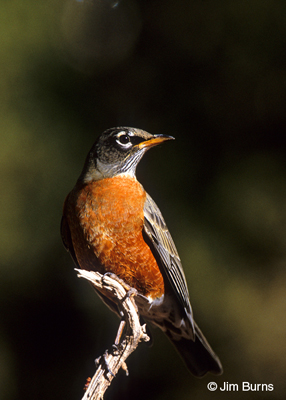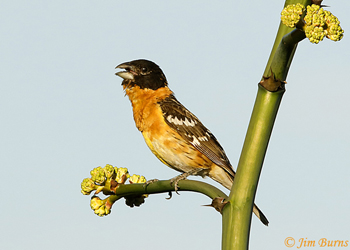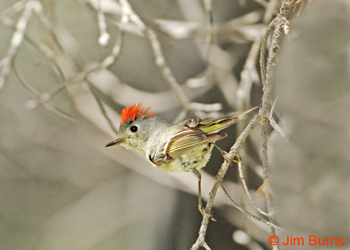
But birdsong, for whatever reason, just doesn’t readily trigger images of the singer in my brain. More recently, though, I’ve tried a new tack. Perhaps because I’m a writer and have a feel for the precise nuance of various closely related words, particularly descriptors, I’ve taken to assigning adjectives to songs and even call notes. The Dusky-capped Flycatcher song is mournful. Pinyon Jays’ calls are querulous.
I’ve found assigning adjectives like these are useful triggers, but every birder’s background and experience are different, so this might not work for you. On my recent White Mountain trip I happily discovered another species for which I was able to correlate song with adjective to conjure the proper avian image. This was exciting for me on two fronts. It triggered aural remembrances from my youth, while also helping me distinguish my new “heard bird” from two other species that share the same habitat and whose songs are somewhat similar, at least to my ear.
I grew up in the Midwest, raised on the top floor of a two-story duplex, and my bedroom was in the back corner, two windows, opening south and west, overlooking the neighbor’s backyard with its large expanse of grass and a huge old Elm tree that gave our house afternoon shade. We did not have air conditioning, my bedroom windows were always open during spring and summer, and they were eye level to the middle stories of the Elm. American Robins lived their lives right outside my window, their song filling my ears and days.
Over the years at my favorite White Mountain campsite I have seen robins in the vicinity, but this year they seemed to be everywhere, doing just what birders associate with “America’s favorite songbird,” their slow, hopping/stopping/head cocking ground exploration leading to mouthfuls of juicy, wiggling worms, then the single syllable scolding call before flying off with their partners, nest bound. Several mornings, though, just at sunrise, they awoke me with their song, and that’s when it hit me—exuberant!
By the second morning I recognized it immediately as the song from my youth. The literature transcribes it as “Cheerily, cheer up, cheer up, cheerily, cheer up,” and calls it clear, liquid, and “caroling.” I’d call it “rollicking,” but it is exuberant to me, the singer ecstatic to be awakening to a new day, loudly excited to get on with the survival chores. And because I heard it first every day, as in my youth, I began to distinguish it from two other common residents of the high pines, Ruby-crowned Kinglet and Black-headed Grosbeak.
It was helpful, of course, to have the opportunity to actually watch all three species while they were singing. Both grosbeak and kinglet tend to sing more throughout the day, the former softer and with more repetitive phrases than the robin, the latter softer still with a longer and an even greater array of repetition. To the grosbeak I have assigned sweet, to the kinglet happy. I’m confident I will now be able to recognize these three species by song alone.
The knowledge I gleaned years ago during my Breeding Bird Survey routes regarding which birds to expect in certain habitats certainly narrowed the number of candidates through which I needed to sort for songs on my recent trip. Still, I can’t help but wonder how many birds I missed on my old routes because I hadn’t found a listening technique that worked for me. Maybe I could have been an ear birder!
Nonetheless, knowing how visual a person I am I then think about how many birds I would have missed actually seeing, knowing all I needed to count them was to hear them. To this day I envy ear birders. But, on one level, I’m glad I’m not one. As you’d suspect, eyes trump ears for me. That’s what drew me into photography.
Black-headed Grosbeak |
Ruby-crowned Kinglet |

